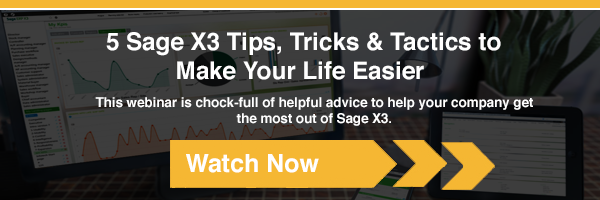The “process” of migrating data is as important as the data itself. In fact, if data migration is the process of transferring information between systems, and information is the main asset of a business, we could easily say that the data migration process is similar to physically moving the whole organization from one place to another.
Data migration is an activity with many approaches – too many to discuss, in fact – so this blog focuses on a very specific type of data migration: upgrading to a newer version of an ERP.
Consider the following things when migrating data to an upgraded ERP:
Clean Before Starting
If we go back to the analogy of data migration being like moving a whole company from one place to another, you might be thinking, “Why clean up just to leave?” Well, assume you're a business with many customizations on your source ERP system. Some of those customizations are likely old, possibly made by past VARs, and therefore may have old data related to deactivated customizations still in the code, and you neither need nor want that. If you don’t clean up inactive customizations, especially on data related to it, the validation stage of an ERP system upgrade will find you running into strange errors that appear to come from nowhere. And, because big ERP systems handle a lot of data, solving those errors will require a lot of trial and error and possibly lead to the need to extend the implementation time and/or going over budget.
Reports, inquiries, historical data, customer records – clean it, then migrate it.
Prioritize
Although the decision of what data to migrate first ultimately depends on the customer, there is a natural order of data migration typically used in implementations: availability. You should migrate catalogs, open transactions, historical data, etc. – what’s available in the earliest stage – first. Timing is important during migrations, and you can save time by starting with the easiest parts and saving the complex parts for the end. Often, you can migrate historical data like sales history before the scheduled go-live date; open transactions and balances must usually wait until the end of the implementation.
Document Everything
This is the most important thing on this list, and considering that the list of tools available to help accomplish the task is nearly endless, there’s no excuse not to do it. Keep track of everything you do – during migration, practice, trial, phase 1, etc. – and you won’t regret it.
Cover all the Fronts
No matter how many years of experience you have in the ERP world, you never stop learning new things, so consider involving a consultant with a specialty in your industry before starting the migration process.
Disk Space
Disk space is such a basic concept that it's easy to take for granted during the data migration process – but you can’t let that happen. Migrating data, creating backups, refreshing test environments, etc. all require disk space and failing to take that into account can stop an implementation in its tracks. Make sure you have the disk space you think you need before you get started, and keep an eye on it as the project progresses.
Implementing new software is never easy, but you can ease the burden by following the right steps. Data migration is one of the first steps, and a very important one, so consider the five suggestions above for a positive migration experience – and contact us if you have questions.
 |
 |









